Written by NDA Senior Tutor, Simone Haley
The Birmingham Royal Ballet recently toured a performance titled ‘[Un]leashed’, which consisted of 3 items of dance. The first titled ‘Lyric Pieces’, choreographed by Jessica Lang, and was a classical presentation of ballet. The second piece by Didy Veldman was a world premiere entitled ‘Sense of Time’ and the final piece was a contemporary take on the tale of ‘Peter and the Wolf’ choreographed by Ruth Brill.
There are plenty of reviews that surround each dance performance. What stood out most of all was the set design. Each dance had a distinctive and sympathetic design aesthetic that complimented each style and narrative.
‘Lyric Pieces’
This dance was filled with poise, elegance and finishes that all pointed toward classic characteristics of ballet.
Dancers performed to perfection whilst changing the set simultaneously. The forms, frames and parameters of the stage seamlessly morphed, guiding your eye line to different areas of the stage. This concertina design created walls, fans, waves and more in smooth transitions from frame to frame. This set design was integrated within the dance form itself creating a modular quality to the stage.
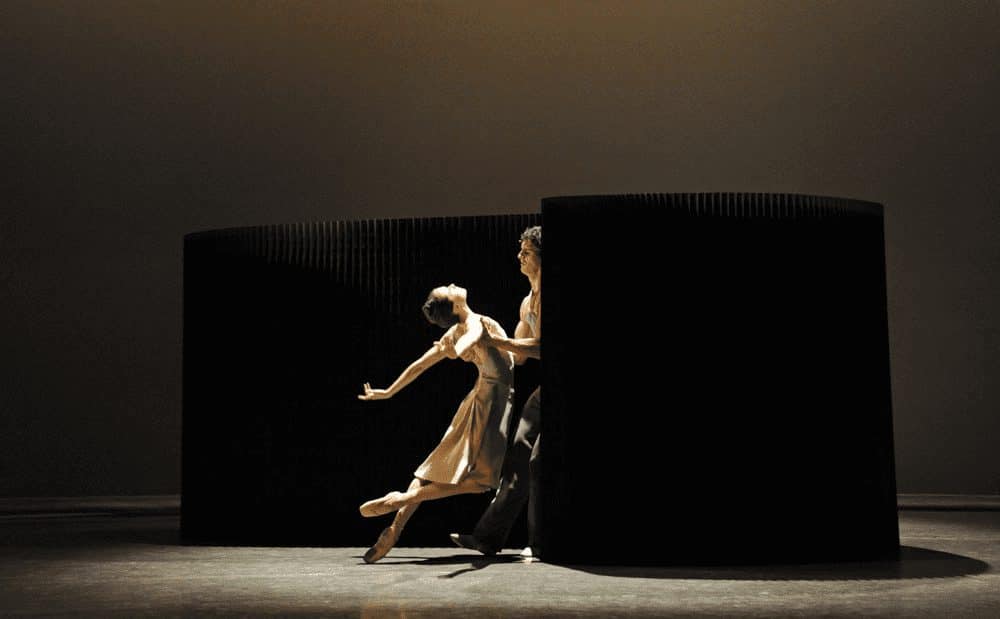
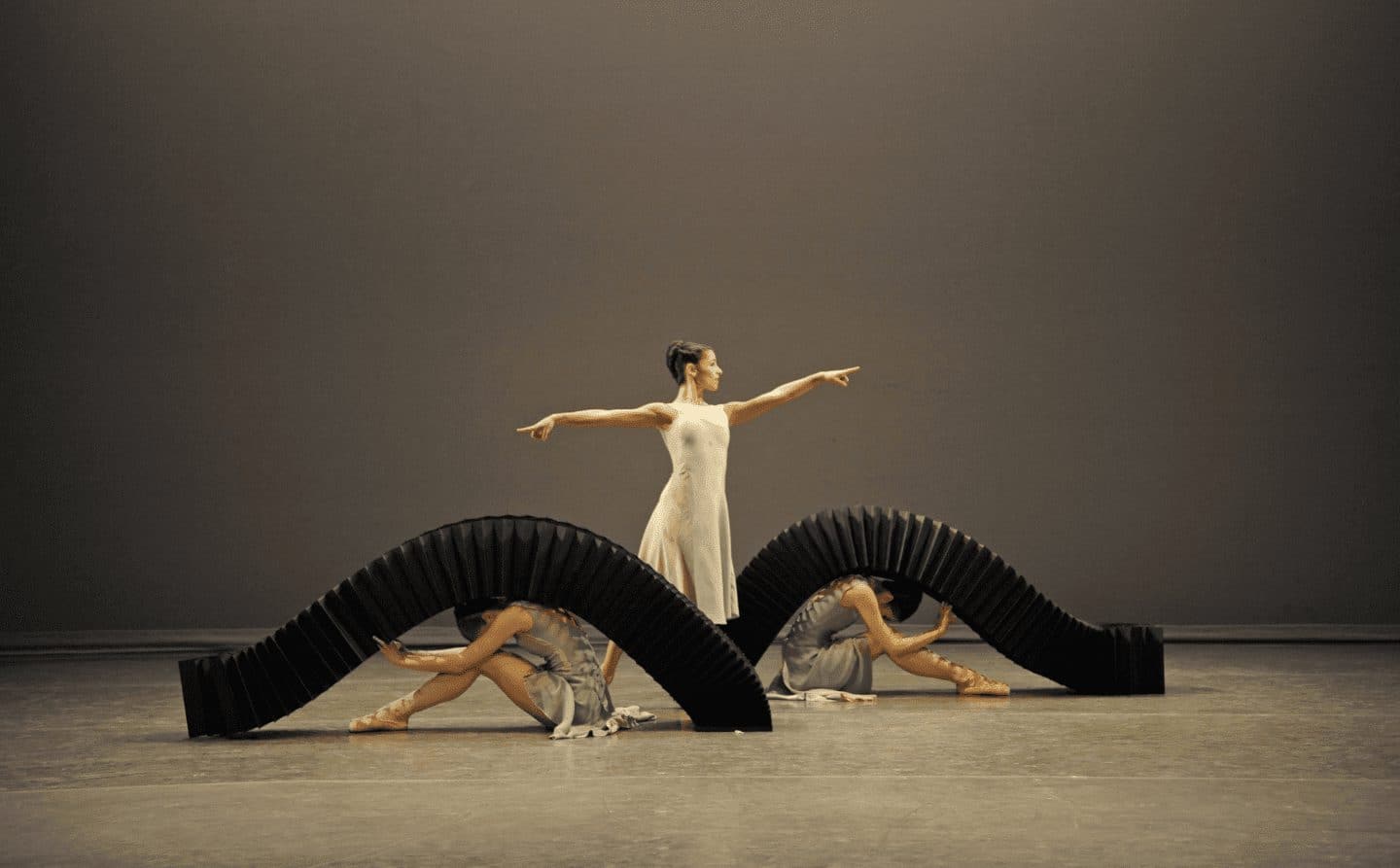
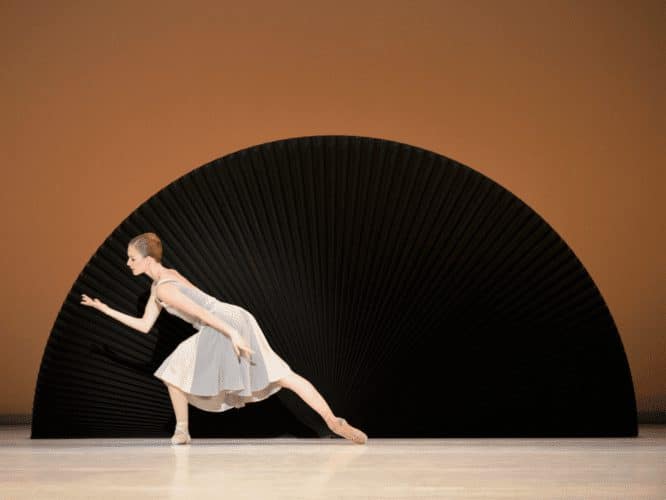
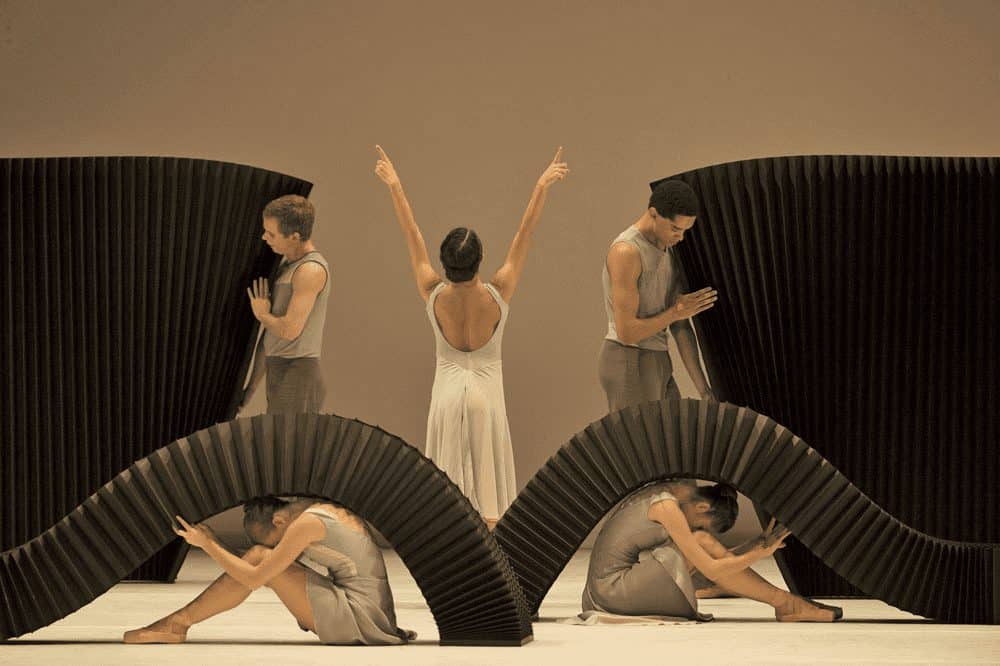
Sanjoy Roy from the Guardian says:
“The set, by Vancouver-based Molo Design, consists of large paper concertinas that the dancers construct into walls, paths or fans.”
Molo Design is a multi-disciplinary and production studio based in Vancouver who specialise in creating modern paper furniture, expandable walls and more.
One of the products used in this performance is the ‘Paper Softwall’.
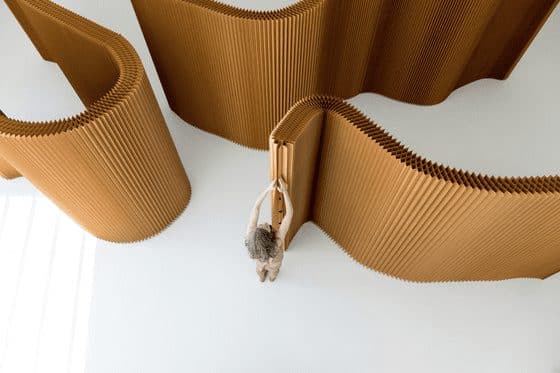
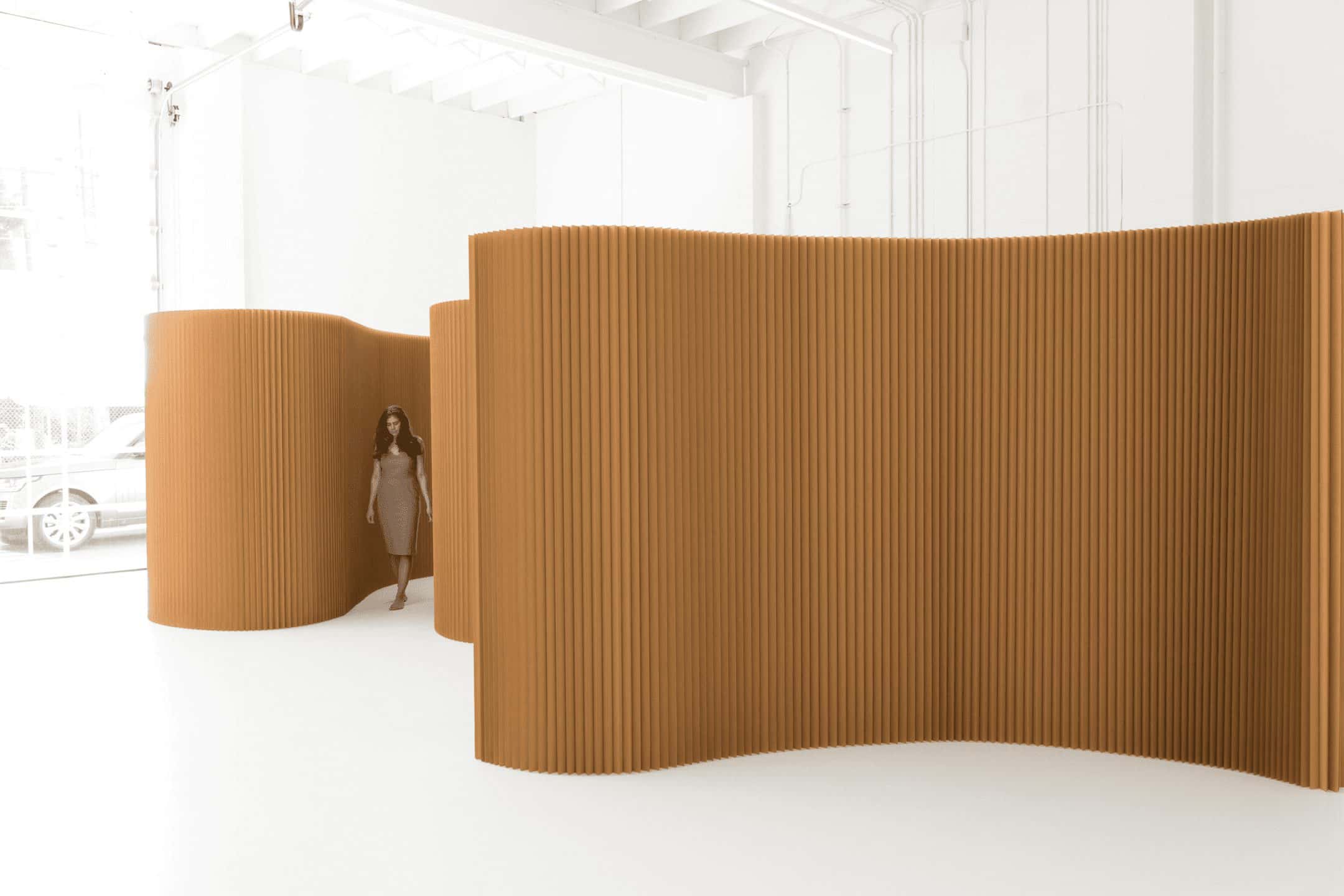
Molo Design explains, “Paper Softwall is a freestanding space partition with the flexibility to be shaped in any curved or linear formation. When stored compressed, the folding wall shrinks to the thickness of a book. It expands to an impressive 15′ (4.5m) long, or any length between. Made from layers of paper structured with flexible honeycomb geometry, the walls are a new building material—relinquishing notions of rigid space making in favour of sustainable design to accommodate change over time and responsible material use.
The wall can be arranged as a room divider to absorb sound and delineate visual privacy or create a striking backdrop for an event or performance. As a modular system, each softwall + softblock has magnetic end panels that connect these flexible building blocks to create longer partitions and immersive, sculptural installations.
Recognized for elegant design and innovation, softwall is held in the Museum of Modern Art’s permanent collection.”
This design purposed for interiors has been used innovatively through dance. The mechanisms, ease and versatility of this product are very persuasive.
‘Sense of Time’
This piece had a different emphasis, intent and meaning. As a new piece this really played with very current issues, including time and our use of it with the infusion of technology. It moves swiftly from the busy hum of everyday city life to more intimate moments of tranquil, past times and human connection.
The ‘Wall of Suitcases’ was designed by Joana Dias and is quite literally a wall of suitcases that rotate through most of this piece. This is another modular contribution, not only does the wall rotate, some suitcases can be removed and the wall is climbable. The wall of suitcases makes choreography really interesting expanding the benefit of the stage floor up, around and through this wall.
The Guardian describes this as a “A monumental wall made of stacked suitcases moves around the stage, shaping the space in which the dancers, like an anonymous crowd, move with short, hectic gestures. The piece interrogates our relationship with time in our frantically busy lives.”
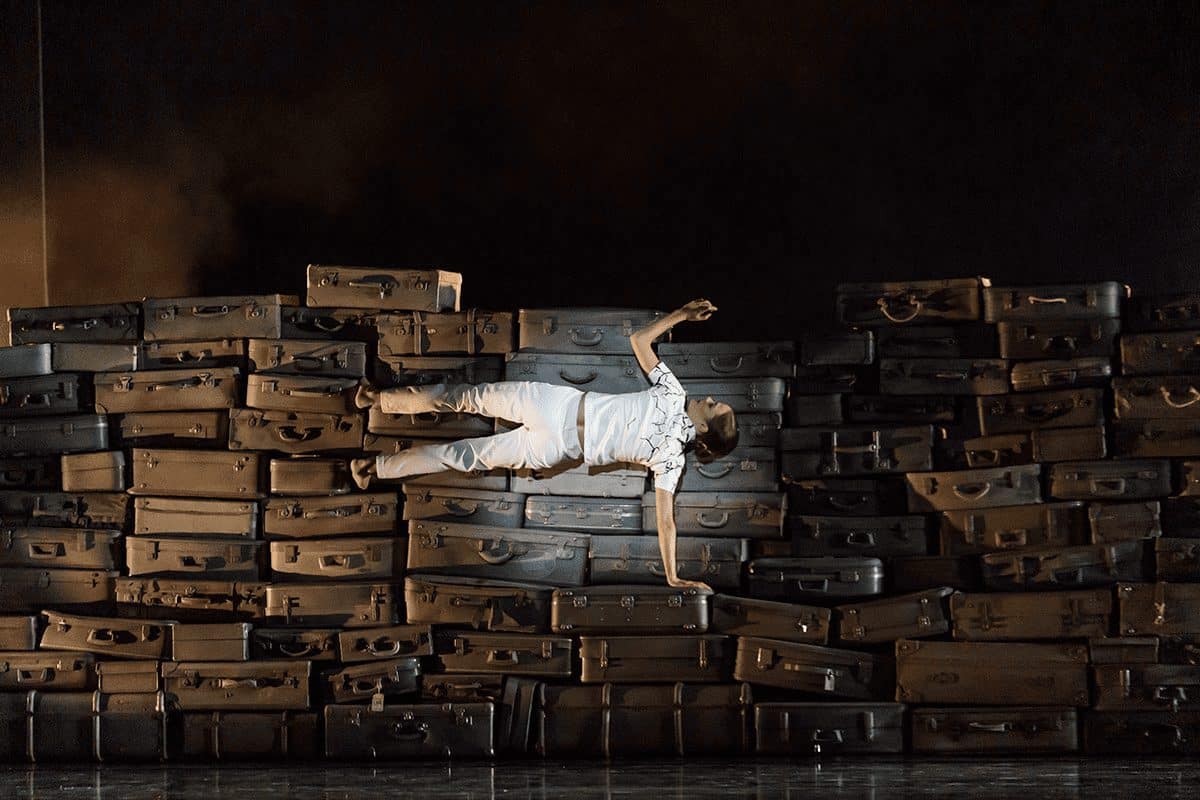
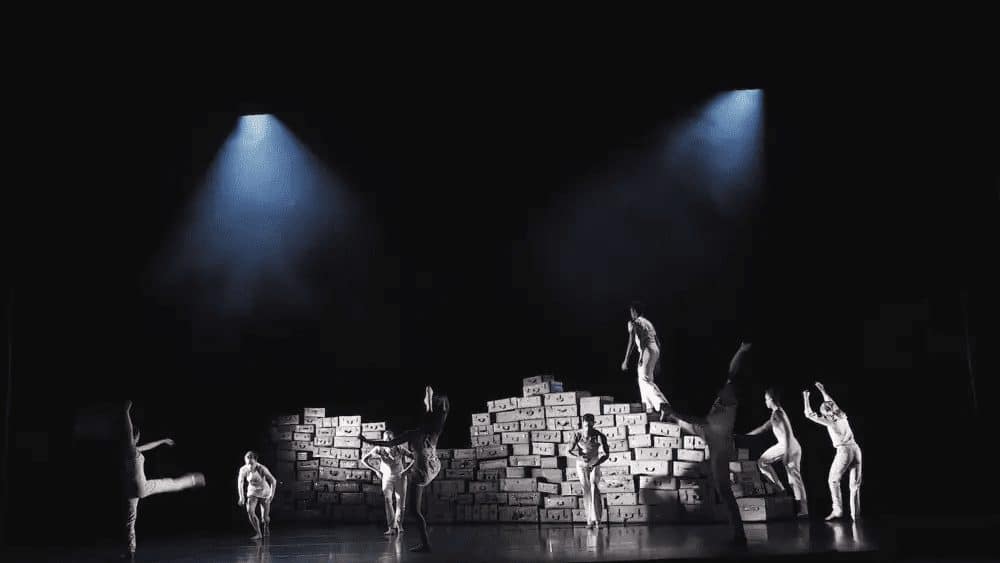
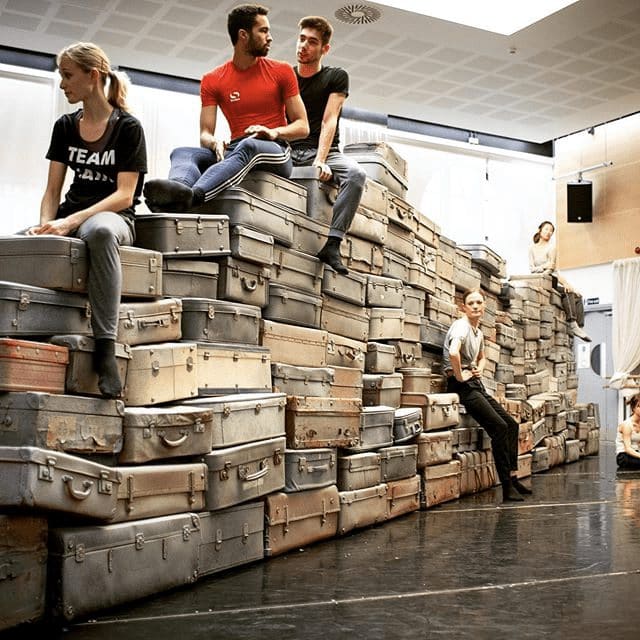
‘Peter and the Wolf’
The dance form was certainly ballet, however the interpretation through the costumes, character interpretation and set was far more contemporary with an urban edge.
The set design was made of scaffolding and was in some ways more conventional as the structure was static with some ladders providing different levels.
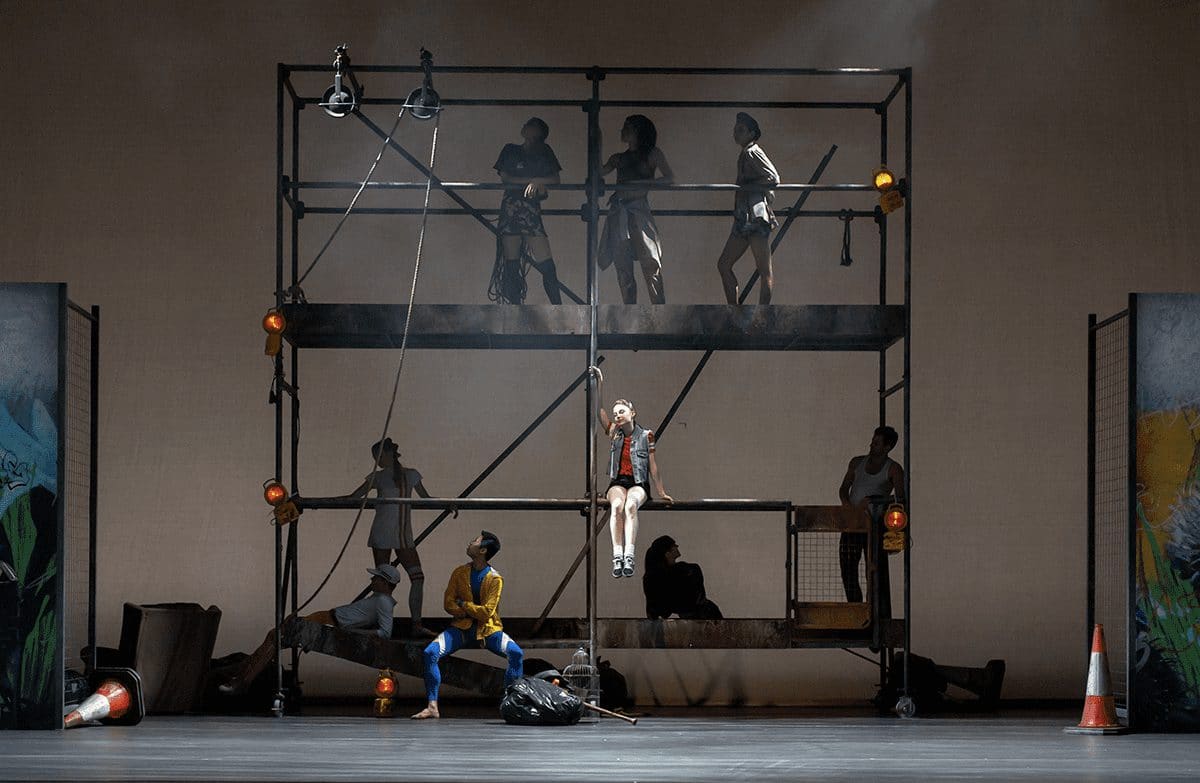
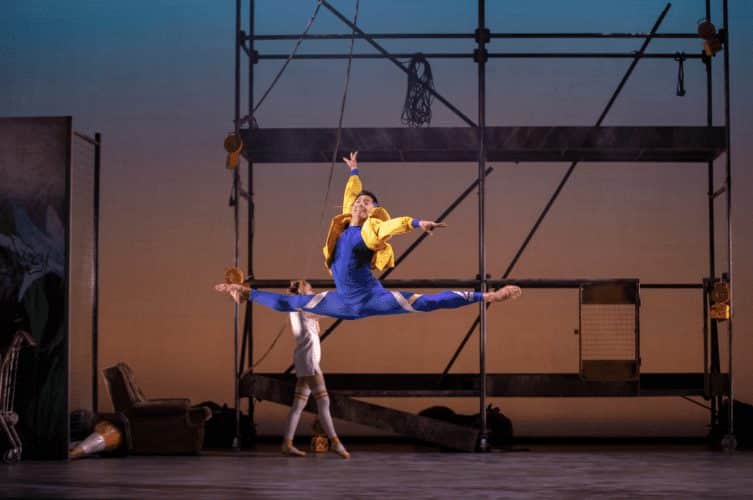
Three very different pieces with each set designed to compliment the style of dance. Purposed for the stage however, these approaches can inspire some interesting alternatives to how we might analyse, explore and define an interior space.

